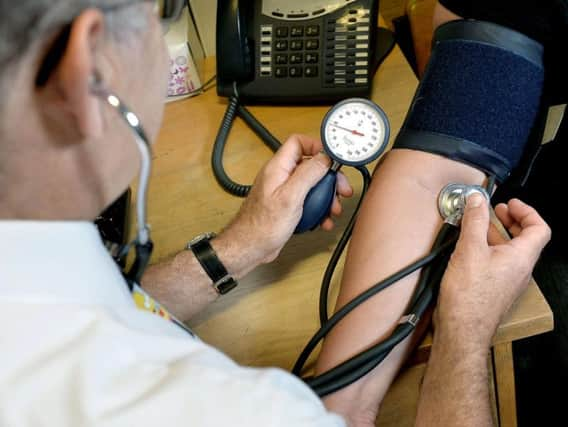Scotland - highest suicide rate in the UK


A report from the Office for National Statistics (ONS) shows that in 2018 there were 6,507 suicides registered in the UK.
The number of people in Scotland taking their own lives last year was 784.
Advertisement
Hide AdAdvertisement
Hide AdWales had the second highest suicide rate of 12.8 per 100,000 (349 deaths) followed by England with the lowest with 10.3 deaths per 100,000 (5,021 deaths).
Three-quarters of such deaths in the UK were among men (4,903 deaths) which has been the case since the mid-1990s.
Mairi Gordon, from Samaritans Scotland, said: “After years of steady progress, these figures should serve as a stark reminder of why we must make suicide prevention a public health priority.
“The Scottish Government has published its Programme for Government setting out its priorities for the year ahead and we hope to see efforts to improve wellbeing and strengthen prevention at the heart of this work.”
Men aged 45 to 49 years had the highest age-specific suicide rate (27.1 deaths per 100,000 males).
The report says that the higher rate of suicide among middle-aged men in recent years might be because this group is “more likely to be affected by economic adversity, alcoholism and isolation. Furthermore, it could be that this group are less inclined to seek help.”
For women, the age group with the highest rate was also 45 to 49 years, at 9.2 deaths per 100,000.
The report also says that in recent years Scotland had one of the largest decreases in the male suicide rate.In 2014, the rate was 20.2 deaths per 100,000 (497 deaths)- this was the lowest rate observed since the current recording system began.
Advertisement
Hide AdAdvertisement
Hide AdSince then, the suicide rate for men in Scotland has increased significantly to 24.5 deaths per 100,000 in 2018 (a total of 581 deaths).
The latest rate of UK suicides is significantly higher than that in 2017 and represents the first increase since 2013.
Nick Stripe, head of health analysis and life events, said the rise in the number of deaths appeared to be due to the increase in men who are at risk ending their lives.
“We saw a significant increase in the rate of deaths registered as suicide last year which has changed a trend of continuous decline since 2013. “While the exact reasons for this are unknown, the latest data show that this was largely driven by an increase among men who have continued to be most at risk of dying by suicide.
“In recent years, there have also been increases in the rate among young adults, with females under 25 reaching the highest rate on record for their age group.
Mr Stripe added: Looking at the overall trend since the early 80s, we are still witnessing a gradual decline in the rate of suicide for the population as a whole.
“We will continue to monitor the recent increase to help inform decision makers and others that are working to protect vulnerable people at risk.”
A Scottish Government spokeswoman said: “We firmly believe that no suicide is inevitable. Through our commitment to deliver mental health counsellors in schools, we are working to strengthen child and adolescent mental health, as we know that prevention and early intervention make a big difference in reducing the risk of developing mental health problems.
Advertisement
Hide AdAdvertisement
Hide Ad“Our suicide prevention plan, supported by an additional £3 million investment, has been designed to further improve suicide prevention and continue the long-term downward trend in the overall suicide rate.”
"The plan also includes a commitment from the National Suicide Prevention Leadership Group to ensuring that all actions undertaken take into consideration the needs of children and young people.
The spokeswoman added: “We also committed an extra £250m through our Programme for Government to improve mental health services, including providing school nurses and counsellors in secondary schools, colleges and universities.”